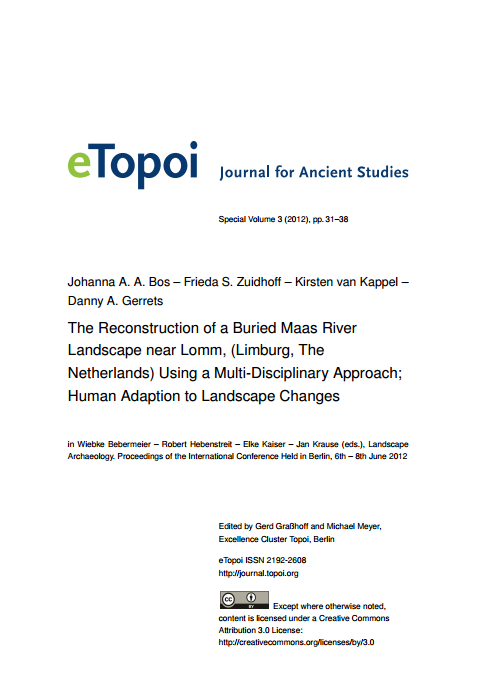The Reconstruction of a Buried Maas River Landscape near Lomm, (Limburg, The Netherlands) Using a Multi-Disciplinary Approach; Human Adaption to Landscape Changes
In the southeast Netherlands large water basins are being constructed near Lomm as a passage for the Maas river during high-water levels. The research area is located on a terrace formed during the Younger Dryas close to the Maas river (Fig. 1). Since 1999, the area has been the object of archaeological research. First a reconnaissance study was carried out during which 18 potential archaeological sites were discovered. In 2003 the sites were evaluated by digging 23 trenches, followed by three digging campaigns.
In order to investigate human-environmental relationships through time a combination of natural science methods were applied including geomorphological (i.e. LOI, grain- size), micromorphological and botanical (i.e. pollen- and macrofossil) analyses. AMS 14C and OSL dating provided an accurate chronology for the sediments.
In the southeast Netherlands large water basins are being constructed near Lomm as a passage for the Maas river during high-water levels. The research area is located on a terrace formed during the Younger Dryas close to the Maas river (Fig. 1). Since 1999, the area has been the object of archaeological research. First a reconnaissance study was carried out during which 18 potential archaeological sites were discovered. In 2003 the sites were evaluated by digging 23 trenches, followed by three digging campaigns.
In order to investigate human-environmental relationships through time a combination of natural science methods were applied including geomorphological (i.e. LOI, grain- size), micromorphological and botanical (i.e. pollen- and macrofossil) analyses. AMS 14C and OSL dating provided an accurate chronology for the sediments.

